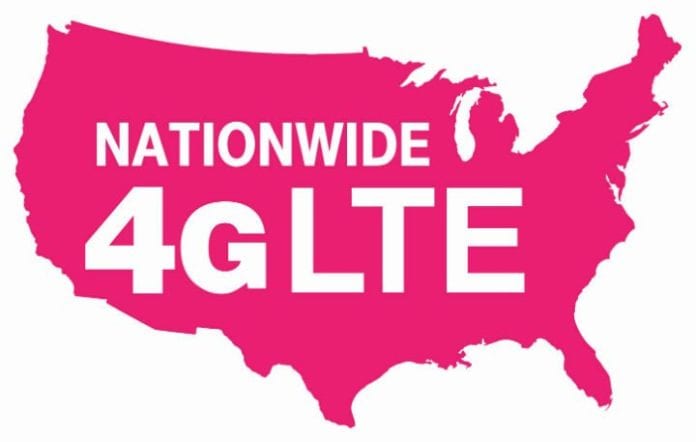T-Mobile said it has expanded 5G work with vendor partners Ericsson and Nokia, while telling CCA members it wants greater LTE roaming, offers VoLTE support
SEATTLE – T-Mobile US continues to flesh out its “5G” network plans, with CTO Neville Ray noting recent trials with vendor partners Ericsson and Nokia.
At this week’s Competitive Carriers Association Annual Conference, held in T-Mobile US’ backyard of Seattle, Ray again provided the carrier’s more cautious view on the timing and capabilities of 5G technology, but noted that the carrier is not sitting on the sidelines in terms of research and development.
In its latest work with Ericsson, T-Mobile US said it completed trials of voice calls between “4G” and 5G networks using Ericsson’s 5G radio prototype system and the carrier’s LTE network and devices. Network speed testing, which is one of the hallmarks of 5G trials, also showed that download speeds of more than 12 gigabits per second were possible with latency of less than two milliseconds.
The tests, which were conducted at Ericsson facilities, are said to include demonstrations of two-directional beam steering and support for multiple 4K video streams.
With Nokia, T-Mobile US said it expanded its work with the vendor using prestandards test equipment and spectrum in the 28 GHz band. The trial is said to have produced “industry-leading connection speeds and throughput rates of several gigabits per second and real-time latency of 1.8 milliseconds while streaming four simultaneous 4K videos.”
T-Mobile US earlier this year announced plans with Nokia and Ericsson to trial technology using the 28 GHz band, with Ericsson filing a request with the Federal Communications Commission to tap the 14.7-15.5 GHz bands to conduct trials near T-Mobile US’ headquarters in Bellevue, Washington.
The carrier earlier this month announced plans to work with Samsung to demonstrate technology advances using spectrum in the 28 GHz band. The collaboration is set to include both lab work and field trials encapsulating “real-world mobile use cases and applications.”
Initial testing with Samsung is said to include mobility in an outdoor environment using T-Mobile US’ 28 GHz spectrum and Samsung’s proof-of-concept system, which is enabled with beamforming technology. The work is then set to include trials using a precommercial 28 GHz system early next year.
In attempting to downplay work on 5G ahead of the standards process, Ray did note that the carrier’s recent work to bolster its LTE network is laying the foundation for its 5G plans, with expectation that the current LTE technology will be its primary competitive position for the next five to 10 years.
“5G will come on top of that,” Ray told CCA attendees. “We are going to push the envelope and make sure we are ready for 5G.”
Ray also took a jab at rival Verizon Wireless, which has been one of the more vocal operators in terms of its 5G work, noting plans to begin fixed wireless commercial services as early as next year. Ray noted there is probably a financial incentive for Verizon Wireless to target a fixed mobile deployment, but if that is all 5G is about, “then we might as well pack our bags and go home.”
Ray also seemed to dismiss a heavy reliance on the “internet of things” as key to 5G, stating he had no interest in having his refrigerator telling him to bring home more milk.
Instead, T-Mobile US said it was looking at more consumer service focused advantages of 5G technology that fit in between fixed broadband and IoT. Ray said the technology would be about high internet speeds, massive capacity bolstered by larger swaths of spectrum, low latency and great battery life.
“Can we bring virtual reality and augmented reality to life in a way wireless networks can support these services,” Ray said. “Those are the things that excite me.”
LTE roaming offer, VoLTE support
More in tune with the CCA audience, Ray also talked up the benefits of work between T-Mobile US and CCA members on LTE roaming, noting such agreements are beneficial for all parties.
“We want to be the best damn roaming partner you can ever wish for,” Ray exclaimed, but added the carrier “needed LTE.”
“We want LTE across the entire nation … from both roaming and organic footprint growth,” Ray said. “We don’t need to build all of this network ourselves … and we will be the best damn partner you have ever had, guaranteed.”
Ray also noted the move toward voice-over-LTE services would allow the carrier and CCA members to get past the voice challenge of roaming deals between the Global System for Mobile Communications-based nationwide operator and many of CCA’s members that rely on code division multiple access-based networks for voice support.
“We don’t care about the old CDMA vs. GSM as we have VoLTE now,” Ray said. “No one understands VoLTE better than us and we can help in launching VoLTE. … It’s an open door from T-Mobile on that front.”
Bored? Why not follow me on Twitter

